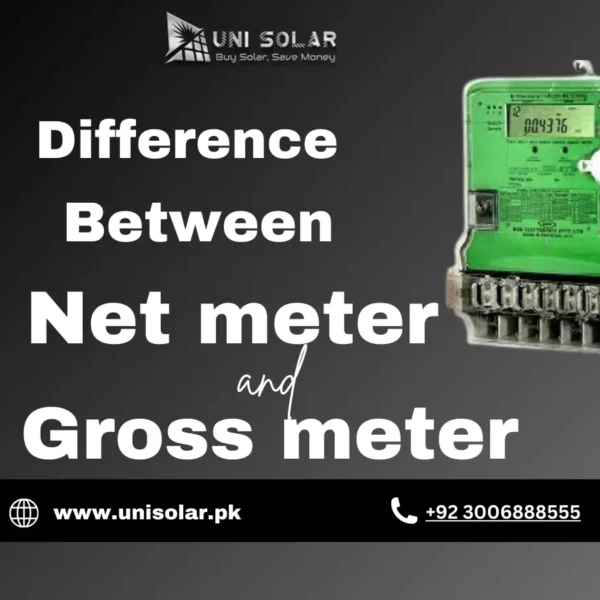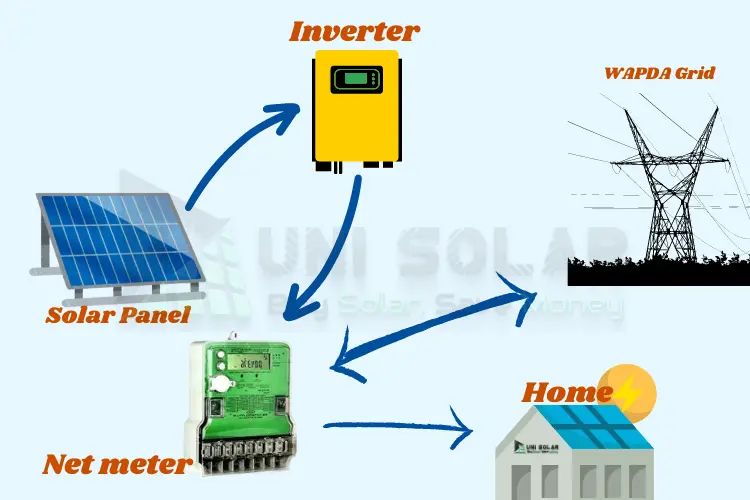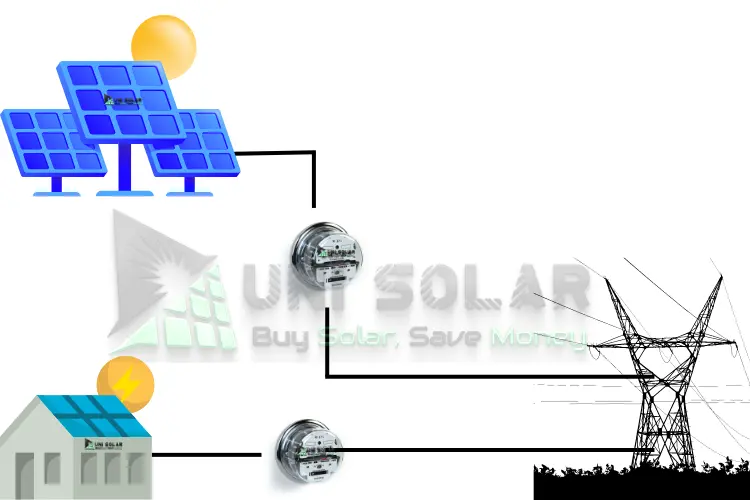Difference between the net metering and gross metering
Solar panels are the main part of the solar system that absorbs the maximum amount of solar energy needed to produce electricity. The efficiency of the solar panel is increased due to the high quality of the photovoltaic cell. This solar energy is utilized in two different ways. In the on-grid solar system, an excess amount of electricity is exported to the grid, and in the off-grid solar system, energy is absorbed in batteries. Depending upon the customer connection type, two types of metering are available in the market net metering and gross metering.
What is net metering?
Customers use the power produced by the solar system directly during the day and feed back the excessive amount of electricity to the grid. When the solar is not producing the energy like at night, customers import the electricity from the grid station. A net metering works in bidirectional like it calculates the number of units that are import and export. On this behalf, you will get an affordable electricity bill. If the import and export units of electricity are the same, then there is a chance to make the electricity bill to zero.
So, the tariff of the power that imported and exported through net metering, and the electricity bill is generated on these facts and figures.
Understand the savings with net metering:
Net metering helps you to reduce the electricity bill by feeding the grid with an excessive amount of electricity that is generated by the solar system. Suppose your monthly consumption units are 750 units, and you installed a 6KW solar system that provides 720 units per month normally. You will save the price of 700 units and only pay the remaining 30 units with the updated power of the tariff. With the help of net metering, you will get back your investment only in 3 – 4 years. This will help to improve your economic condition.
What is gross metering?
It differs from the net metering in terms of the working strategy. In gross metering, the electricity that is produced by the solar system, you cannot use it directly. Two electric meters operate in this regard. The first one allows the export of all the generative electricity to the grid station, while the other calculates the units of imported electricity. The tariff prices of both electric meters are different from each other. The prices of the units that import are higher as compared to the units that export. Therefore, you cannot get a zero electricity bill. You have to pay at least a little, but not a zero.
Understanding the saving with gross metering:
There are two types of meters are used. Suppose you have a consumption of 750 units per month, and you install a 6 KW solar system. This 6 KW solar system produces around 720 units per month. The generation of the solar system directly goes to the grid station for Rs. 5, while when you need to import the electricity, the price of the electricity units is Rs. 9. The total price of the export units is (5 * 720) Rs. 3600. And the total price of the import units will be (9 * 750) Rs. 6750. The price which you have to pay will be (6750 – 3600) Rs. 3150. In the gross metering, the total saving is only 3600 rupees. Therefore, it is not suitable for solar systems due to the low payout. In this metering, you need a long period to recover your investment.
Conclusion:
Everyone wants to install a solar system to get free electricity and further get reasonable benefits for generating excessive electricity. The net metering first fulfills the system’s desire and provides the required load, and then it is fed back to the grid station if the system generates an excessive amount of electricity. It takes a little electricity from the grid station only when solar does not produce electricity. The gross metering exports all the generated electricity to the grid at very low rates, and you will purchase these units at an official price. The profit margin in this system is very, very low. Therefore, it is not suitable for solar systems.



